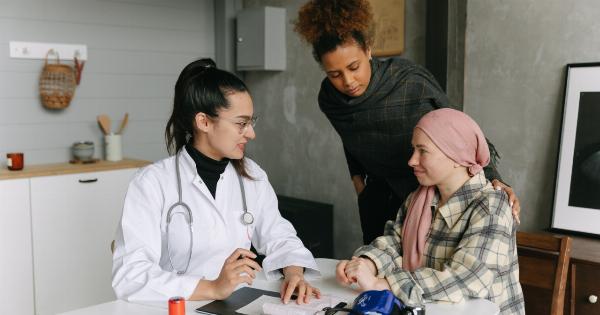As a parent, it’s natural to wonder about the development of your child, especially when it comes to their genitalia.
In this article, we will discuss the various stages of penis development in boys, what to expect during each phase, and address common concerns that parents may have.
Prenatal Development
Penis development begins during fetal development. At around 9 weeks gestation, the tissue that will eventually become the penis starts to form.
By the 12th week, the external genitalia become more visible, allowing for identification of the sex of the fetus.
During this stage, it’s important to note that the size of the penis doesn’t necessarily indicate the size it will be during adulthood. The organ undergoes significant growth and changes during puberty.
Infancy
After birth, it’s common for parents to notice that their baby boy’s penis may appear larger than expected or have an uncircumcised appearance.
This is due to the presence of the foreskin, a retractable tissue covering the glans of the penis.
Circumcision
Circumcision is a personal decision made by parents for various reasons, including cultural, religious, or health considerations. If you choose to have your son circumcised, the procedure is typically performed within the first few days after birth.
It’s important to discuss the pros and cons of circumcision with your healthcare provider before making a decision.
Some key considerations include reduced risk of urinary tract infections, sexually transmitted infections, and penile cancer, while potential cons include pain, bleeding, and infection.
Childhood
During childhood, the penis continues to grow gradually. Parents may notice variations in the rate of growth, which is considered normal.
It’s essential to encourage good hygiene practices, teaching your son to clean his penis properly, including pulling back the foreskin gently and rinsing the area with water.
If your son is uncircumcised, it’s crucial to emphasize the importance of hygiene to prevent issues such as infections or phimosis (a condition where the foreskin is too tight and cannot be retracted).
Puberty
Puberty is a significant milestone that marks the onset of sexual maturation. During this stage, the penis experiences significant growth, both in length and girth. The age at which puberty begins may vary, but it often starts around 9 to 14 years old.
Secondary sexual characteristics such as pubic hair growth, increase in testicle size, and voice changes accompany penis growth during puberty.
It’s essential to educate your son about the physical changes that occur during this period to help him navigate through this stage with confidence and understanding.
Emotional and Psychological Support
It’s important for parents to provide emotional and psychological support to their sons during their penis development stages.
Open discussions about puberty, body changes, and any concerns or questions they may have can help alleviate anxiety or embarrassment.
Encouraging healthy body image and promoting self-acceptance is crucial in helping boys develop a positive attitude towards their bodies and sexuality.
Common Concerns
Parents may have several concerns regarding their son’s penis development. Here are some common ones:.
1. Size and Shape
Parents often worry about whether their son’s penis size or shape is normal. It’s important to remember that penis size varies greatly among individuals and is not an indicator of sexual function or fertility.
If you have significant concerns, you can discuss them with your healthcare provider.
2. Early or Delayed Puberty
Puberty may begin earlier or later than expected in some boys, which can cause anxieties for both parents and children.
It’s important to remember that the timing of puberty can be influenced by various factors, such as genetics and overall health. If you have concerns, consult your healthcare provider.
3. Erections
Parents may notice that their sons experience erections, especially during sleep or when waking up. This is a normal physiological response and not necessarily associated with sexual thoughts or actions.
It’s important to educate your child about this natural occurrence to help them understand their bodies better.
4. Personal Hygiene
Teaching your son proper personal hygiene is essential to prevent infections and maintain overall penile health. Teach them to clean their penis daily, retracting the foreskin gently (if uncircumcised) and rinsing the area with water.
It’s important to emphasize the importance of avoiding harsh soaps or excessive scrubbing.
Conclusion
Understanding the normal stages of penis development in boys can help parents address any concerns they may have and provide appropriate guidance.
From prenatal development to infancy, childhood, and puberty, it’s essential to support your son emotionally, educate about hygiene practices, and foster a positive body image. Remember, every child is unique, and variations in growth and development are normal.
If you have significant concerns, it’s best to consult with your healthcare provider who can provide personalized guidance based on your child’s individual needs.































